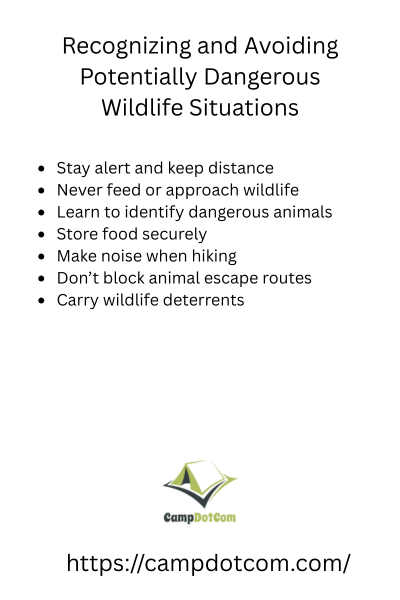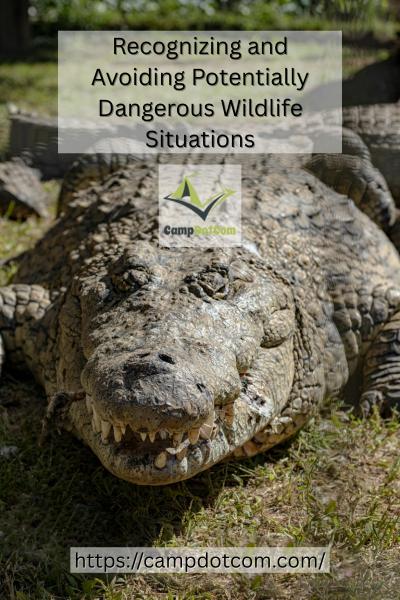When you are out enjoying nature, knowing how to recognize and avoid potentially dangerous wildlife situations is not just a handy skill. It could be a lifesaver. Trust me, I have had a few close calls myself, and those moments really show how important it is to stay alert and prepared.
Read More About Recognizing and Avoiding Potentially Dangerous Wildlife Situations

A Close Call in the Woods
I remember one time I was hiking in a forest I thought I knew well. I was so caught up in the scenery that I did not notice a large bear track right by the trail. Suddenly, I spotted movement just a few yards away. It turned out a bear was quietly rooting around for food. My heart raced, and I froze for a second before slowly backing away. Luckily, the bear was not interested in me, and I got out of there safe and sound. That day really taught me how important it is to notice the signs of wildlife nearby before it becomes a problem.
More Things to Know About Recognizing and Avoiding Potentially Dangerous Wildlife Situations

Why Recognizing Dangerous Wildlife Situations Matters
You might think, “I’m just out for a walk or camping for fun, what’s the worst that could happen?” Well, wild animals usually want nothing to do with humans, but sometimes situations get tense—especially if they feel threatened or surprised. Knowing what to look for helps you avoid those “uh-oh” moments.
As an Amazon Associate, I earn from qualifying purchases. Some of the links in this article are affiliate links. This means that, at zero cost to you, I will earn an affiliate commission if you click through the link and finalize a purchase.
Reading the Signs
First off, keep your eyes peeled for signs that animals have been nearby. Tracks, scat (yep, animal poop!), claw marks on trees, or even sounds like rustling in the bushes can all signal that wildlife is around. For example, fresh tracks or broken branches might mean an animal passed through recently.
Also, watch out for warning behaviors. Animals may hiss, growl, puff themselves up, or make other loud noises if they feel threatened. If you see this, it’s a pretty clear sign to give them space.
Stay Calm and Respect Their Space
If you find yourself face-to-face with a potentially dangerous animal, it’s key to stay calm. No sudden moves or screaming—this can escalate things fast. Back away slowly, avoiding eye contact with predators like bears or big cats, but don’t turn your back and run. Running can trigger their chase instinct, and that’s exactly what you don’t want.
Avoiding Trouble Before It Starts
Here is the good news: most dangerous wildlife situations are completely avoidable. Simple steps like making noise while you hike, whether by talking, clapping, or using a bell, let animals know you are coming so you do not surprise them. Keep your food sealed tight and stored away from your tent, because hungry critters have a nose for snacks and will come looking.
If you are camping, take time to learn about the local wildlife before your trip. Some areas have bears, others have snakes or mountain lions. Knowing what is common in the area helps you plan smart and stay safe.
What About Snakes and Insects?
It’s not just the big animals you have to watch out for. Snakes and insects can also cause dangerous situations if you’re not careful. Watch where you step, especially around rocks or tall grass. If you see a snake, give it plenty of space and don’t try to move it yourself.
Insect bites can be annoying, but some can be serious. Use insect repellent, wear long sleeves and pants if you’re in bug-heavy areas, and check yourself for ticks after a hike. Those tiny creatures can carry some nasty diseases.
My Best Tip? Stay Alert and Enjoy
Recognizing and avoiding potentially dangerous wildlife situations doesn’t mean you have to be scared of the outdoors. In fact, being prepared lets you enjoy it even more! Keep your senses sharp, respect animals’ space, and you’ll have plenty of stories to tell that don’t involve close calls.
Staying Safe by Recognizing Signs of Nearby Animals
So, whether you are a seasoned hiker or just someone who loves a weekend camping trip, remember that spotting signs of wildlife and knowing how to act can keep you safe and free from stress. The outdoors is amazing, and with a little know how, you can make sure your adventures stay fun and free of unexpected wildlife drama.
Got any wild encounters of your own? I would love to hear them! Just remember, next time you are out there, keep an eye out because you never know who might be watching back.
